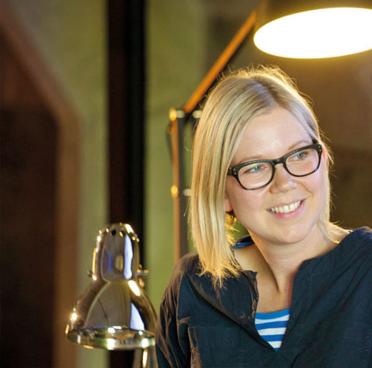The Invisible Store of Happiness: Thinking
Furniture designer Sebastian Cox is passionate about English coppiced hazel. So he’s perhaps not the obvious choice for the American Export Hardwood Council (AHEC)’s installation for Clerkenwell Design Week and London Design Festival. But then AHEC aren’t known for making obvious choices. Their installation for the 2013 London Design Festival – designed by dRMM as an investigation into the structural properties of hardwood – was an Escher-inspired Endless Stair.
What excites Cox about coppiced hazel is its sustainability. Coppicing involves felling trees every 14 years. They regrow and, as long as they are coppiced, will never die of old age. But it’s also about giving value to an underused resource. One fourteenth of the wood is cut every year, so there are always trees at every stage of regrowth. British woodlands were managed in this way for thousands of years, so whole ecosystems of plants, insects and birds evolved to live in these unique habitats. A decline in coppicing due to the falling value of the timber is threatening these species. “My motivation is putting money back into the woods by making objects that people want to buy,” said Cox.
Having worked as a maker for Benchmark on AHEC’s Out of the Woods project in 2012, Cox was one of ten young designers asked to take part in AHEC’s Wish List project for the 2014 London Design Festival. He was commissioned to make a ‘cocoon-like desk’ for Sir Terence Conran. First, he needed to be convinced of the environmental impact of importing wood. It turns out that the carbon footprint of moving wood 6,000 miles by ship is equivalent to moving it 600 miles by road, so sourcing wood from the East coast of America is comparable to getting it from Scotland. Given that Europe will never be self-sufficient in hardwood, even with declines in manufacturing, it made sense. And the American hardwood forests are so vast that the timber used for the entire Wishlist project was replaced in less than two seconds. The next thing Cox wanted to know was which timbers are currently underused. Design is subject to trends like anything else, but when it comes to wood it’s important to use what nature provides. The current fashion for white oak and walnut is resulting in imbalanced demand. Cox chose to work with red oak and cherry and made Conran’s desk with a carbon footprint one third that of an iPhone 6.
The challenge for this installation is to raise the profile of maple and cherry, both beautiful and yet underappreciated American hardwoods, and to create a three-dimensional form to communicate the environmental benefits of using them. To meet this challenge, Cox is collaborating with artist Laura Ellen Bacon, known for abstract willow sculptures - another surprising choice. The two couldn’t be more different, illustrated by the fact that Cox draws with a 2H pencil for accuracy, while Bacon sketches with a 6B for complete freedom, but as David Venables AHEC’s European Director explains, “She turns the whole thing on its head – she comes at this from a completely different angle, but with the same passion.” AHEC want to challenge perceptions of hardwood, both as a material and as a sustainable and growing resource. With an installation at two of the most influential design events of the year - Clerkenwell Design Week and London Design Festival - created by two such passionate and interesting designers, it’s difficult to see how they can fail.
